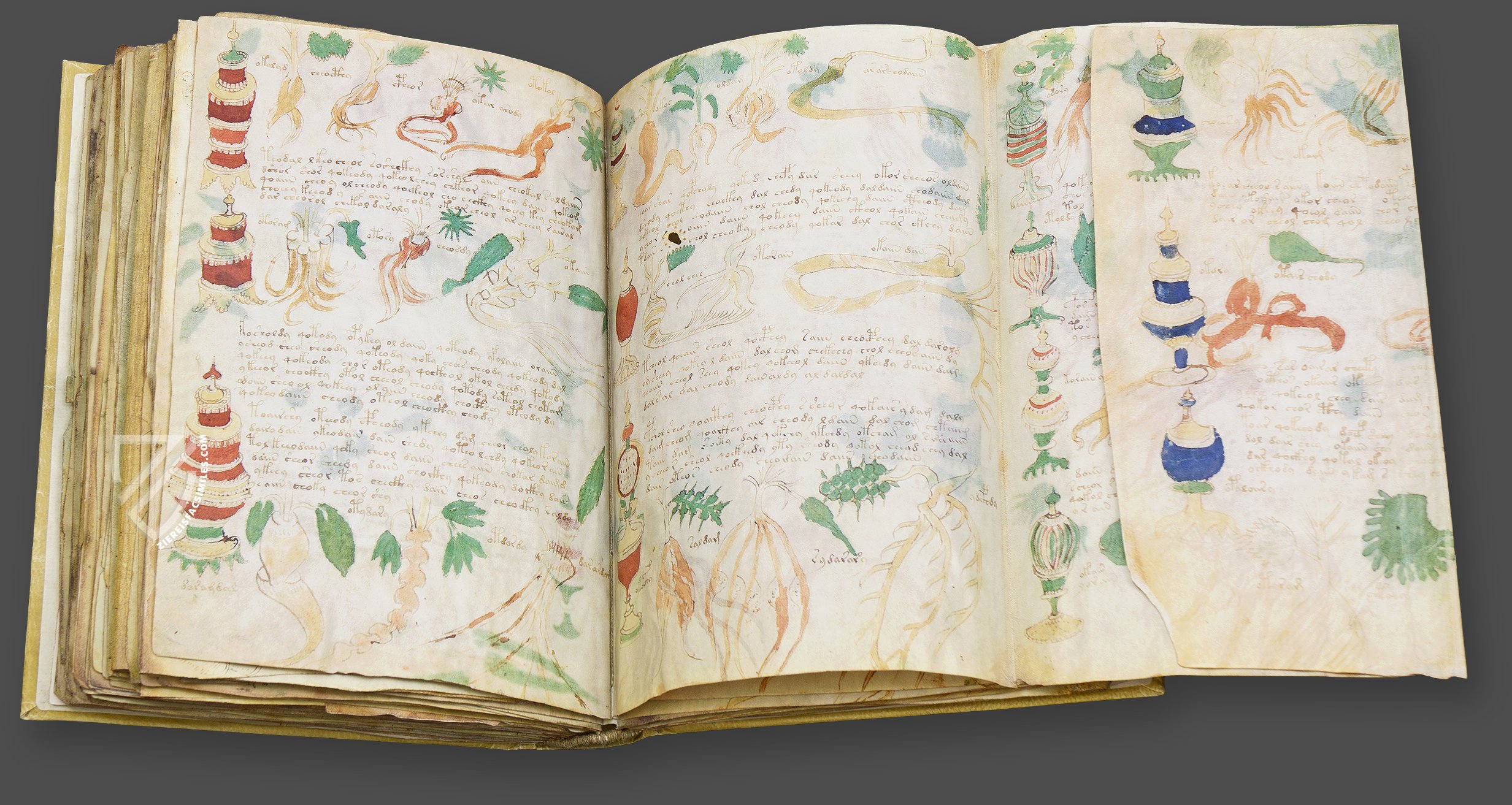

That rules out Roger Bacon (who was already dead), da Vinci (who hadn't been born), and the peoples of post-contact Mesoamerica. Recent chemical analyses, however, concluded that the oak gall ink and the mineral and botanical pigments are consistent with medieval recipes, and Carbon-14 analysis has dated the parchment to between 14. In addition to Roger Bacon, the manuscript has been credited to Leonardo da Vinci or attributed to 16th-century Mesoamerica. There is, in fact, no medieval manuscript that has been seen, studied, analyzed and debated more than Beinecke Rare Book and Manuscript Library MS 408.ĭozens of solutions have been proposed in the past century alone, most of them more aspirational than they are substantive. What is it about the Voynich Manuscript that keeps us clicking? Why do we fall for the breathless announcements, only to see them denounced within hours or days? And why should we care about the Voynich Manuscript at all? While it took years for Manly to call out Newbold, today's refutations are posted within hours on Twitter or other platforms. Word of each new solution spreads across the globe in minutes. Like others before them, these authors tend to go public prematurely - and without proper review by the real experts. The Voynich Manuscript contains illustrations of unidentifiable but detailed plants, circular zodiacal and astronomical diagrams and other images that defy description. (In fact, there is no resemblance between Voynichese and Tironian Notes.) Recent proposals that were reported worldwide argued that it was written in "Proto-Romance" (something that was not an actual language in the early 15th century), in ancient Hebrew (this theory depends in part on Google Translate, which can't really handle medieval languages), or - as publicised just last month - in an Italian dialect transcribed using a well-known medieval shorthand system called Tironian Notation. Every solution I have seen falls apart under scrutiny, from wishful foundations to illogical conclusions. In addition to my own work on the Voynich, which involves a detailed study of the scribes who wrote the manuscript, I've been increasingly called upon by the media in recent years to comment on various theories. Their attempts to demystify the medieval past only serve to mystify it further, making the Voynich into a telling avatar of our vexed relationship with the past. But most would-be interpreters make the same mistake as Newbold: By beginning with their own preconceptions of what they want the Voynich to be, their conclusions take them further from the truth rather than nearer.

Like modern-day Newbolds, we all want to know what the Voynich means.

Ever since I first laid eyes on the manuscript 30 years ago, I have been captivated not only by the object itself but also by the hold it has on both the public and the persistent and devoted "Voynichologists" who can't get enough. In addition to my other responsibilities, I was tasked with handling Voynich-related correspondence. I've been critiquing Voynich theories since I was a PhD student at Yale in the early 1990s and had a job at the Beinecke Library. Every few months, it seems, a new theory is trumpeted by the news media beneath a breathless headline along the lines of "Has the Voynich Manuscript Really Been Solved?" (Spoiler alert: No, it hasn't.) I've seen them all. The Voynich Manuscript is written using an otherwise unknown collection of symbols known to those who study the codex as "Voynichese." Photo / Getty Images Although they had once been close friends, Manly felt a moral imperative to publicly denounce Newbold's work in the "interests of scientific truth." "In my opinion," he wrote, "the Newbold claims are entirely baseless and should be definitely and absolutely rejected. Newbold's solution was debunked in 1931 by University of Chicago classicist John Matthews Manly in a journal of medieval studies called Speculum, leaving Newbold posthumously disgraced. and the truth of six hundred years ago is coming out!" Newbold surmised that 13th-century English scientist Roger Bacon had written the manuscript with the aid of a microscope and a telescope, centuries before the invention of either instrument. In June 1921, the monthly magazine Hearst's International announced that University of Pennsylvania Professor William Newbold had "come upon the key to the secret cipher of the Manuscript. For centuries, the Voynich Manuscript has resisted interpretation, which hasn't stopped a host of would-be readers from claiming they've solved it.


 0 kommentar(er)
0 kommentar(er)
